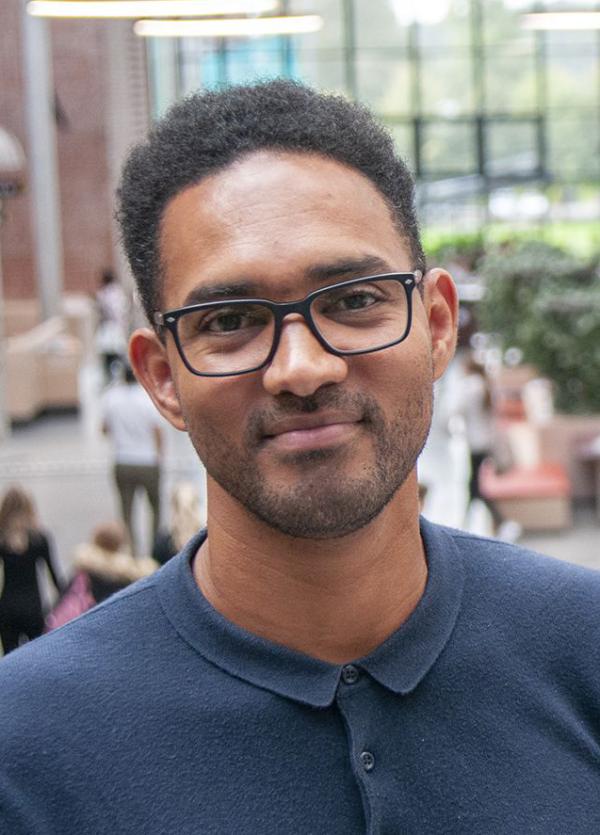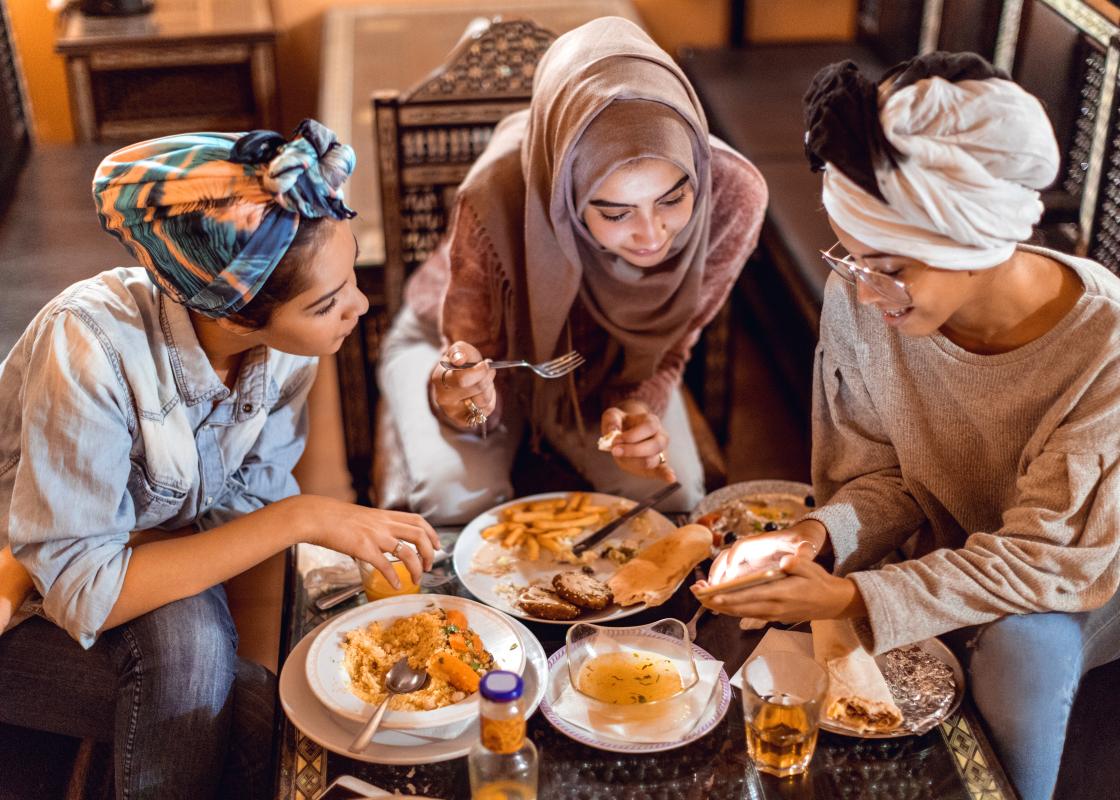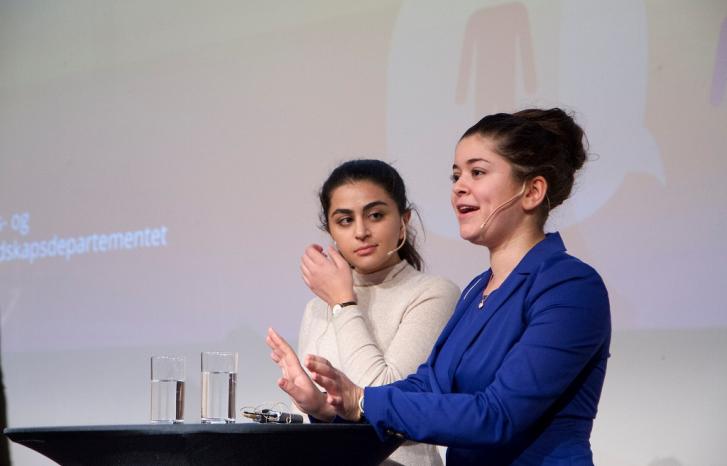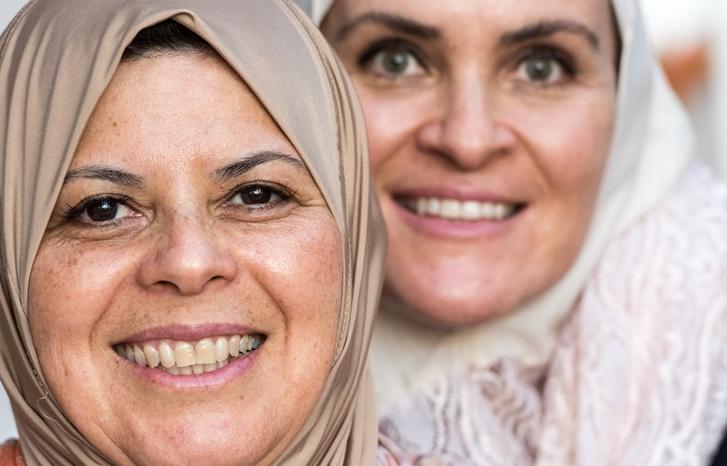“In the Bible you have something about women and that they have been given this job. I don’t know, it is just strange to see men in the kitchen. Dad can cook and stuff at home. But it is different in the church.”
These are the words of Semira, a young girl who attends the Eritrean-Coptic church community in Oslo. Her words are quoted in Ronald Mayora Synnes’ PhD thesis. Like other religious people with minority background of her age, she considers gender roles in her church community as something completely different from gender roles at home or in society in general.
“Within the religious communities, the youth respect conservative gender roles. They do not find it problematic that women are seated apart from the men or that they look after the children and prepare food. They rarely question that only men can be imams or priests. At the same time, they care about gender equality outside the religious community,” says Synnes.
He has investigated attitudes to gender roles among both Muslim and Christian youth who attend so-called migrant religious communities in Oslo. They all have in common that they find themselves between diverging ideals. They have to negotiate terms for the gender roles with their parents, their religious community and the expectations for integration and adjustments to Norwegian society.
Norwegian Muslims
Two of the religious communities that Ronald Mayora Synnes has studied are Muslim. There are fifty-six Muslim communities in Oslo, of which Synnes has studied Rabita and Islamic Culture Centre (ICC). Many teenagers actively participate in both of these, and they come from many different ethnic backgrounds. According to him, they emphasise their identity as ‘Norwegian Muslims’.
“Most of the youth activities take place in Norwegian. They want to adjust to Norwegian society,” he says.
The teenagers experience a lot of stigmatising in Norway precisely because Islam is often associated with oppression of women.
This becomes especially clear when it comes to women and their role.
“The teenagers experience a lot of stigmatising in Norway precisely because Islam is often associated with oppression of women. They are aware that this is the case in many Muslim countries, and they are eager to point out that this has to do with that specific country, not Islam.”
Distinguish between religion and parents’ culture
The Muslim teenagers that Synnes has interviewed distinguished clearly between religion and culture.
“This is a strategy to protect their religion,” Synnes explains.

“Many teenagers encounter other interpretations of Islam in Norway than the interpretation that their parents have from their country of origin. They adjust their interpretations and thus break the connection between Islam and their parents’ culture.”
“How do they distance themselves from their parents’ religious practice?”
“They look to the Quran. Many of the young people have a better command of the Quran than their parents have. If their parents say that they have to do things in a certain way because it is in accordance with Islam, they may respond that they do not find any support for this in the Quran. This is a way of opposing their parents.”
According to Synnes, the Muslim youth continuously must defend themselves because of the stigmatisation that they experience.
“You have to pick your battles, and many find it easier to sacrifice their culture rather than their religion.”
Synnes explains that Norwegian Muslims have to establish and highlight their Norwegianness because their religion contrasts with the Norwegian majority culture. The Christian youth in his study come from Eritrean and Chinese background.
“The Christians do not have to defend their religion, since they do not encounter the same prejudices as the Muslims do. They face other challenges related to their skin colour.”
But in their eyes, Norwegian Christianity is not ‘Christian enough’, says Synnes.
“One girl from Eritrea thought that Norwegians are not Christian enough. I asked whether she could marry a Lutheran. She said that maybe she could, but then he would have to redeem himself and become a ‘true Christian’.”
The researcher observed that the Christian teenagers were generally more conservative in questions related to gender. For instance, many agreed that women could not serve as priests in their church communities. However, he emphasises that it is important to remember that Muslim and Christian youth find themselves in very different situations.
“The Muslim teenagers are very attentive to questions related to gender equality. They are used to being challenged on this issue, and they are well prepared for questions about gender and religion. The Christians do not get these questions as often, and do not have the same practice when it comes to talking about these things.”
Between two ideals
Both Islam and Christianity are patriarchal religions, which means that men have authority and power.
“In the religious communities, the gender roles are based on an ideal of complementarity, that differences between men and women are highlighted as something positive,” says Synnes.
Due to this perception, women and men conduct different tasks within the churches and mosques. But outside of the religious community, the teenagers do not accept that women have to take all responsibilities in the home or other obviously gendered tasks. The youth from Eritrea explain this by stating that ‘it is not like that in Norway’.
One informant said that ‘if a Norwegian had seen what it is like within the religious communities, he would have found them oppressive.’
“Many say that it may be like that in Eritrea, but in in Norway, everybody has to work. It is not acceptable that women are housewives.”
“Why do they accept the lack of gender equality in the religious community when they argue for gender equality in general?”
“They base their ideals upon religion. These ideals are often deeply rooted within them, but it does not matter if things are different outside the religious community.”
“One informant said that ‘if a Norwegian had seen what it is like within the religious communities, he would have found them oppressive.’ But they do not think so. They accept that in religious life and matters, you follow the Bible.”
Women hold informal leading positions
Men are also the head of their family, both in Muslim and in Christian traditions. The young Muslims and Christians accept this, but they nevertheless challenge the men’s authority. Ronald Mayora Synnes refers to an Eritrean girl whom he interviewed about women’s roles. Although there is a theologically founded dogma that women cannot be teachers, a woman worked as a teacher in the girl’s church community.
“When I asked her how this could be, she responded in a resigned manner that God may use whomever he wants as teachers.”
“Another argument was that they do not have enough teachers with the right background, and the woman was the best qualified candidate. The fact that a woman got the job was thus a result of pragmatics and internal negotiations, but it is not a solution that they encourage.”
Many women are role models in the religious community, especially the wives of the leaders. These women play a central role, according to Synnes.
“The men are serious, and appear colder, whereas the women are more charismatic towards both men and women. They have informal roles, but people prefer to approach them. Thus they have much authority in this regard,” he says.
The fact that women do not advocate for more formal power in the religious communities is because they accept complementary gender roles, but it also has to do with the way in which life appears outside the church or the mosque.
“Research in the field indicates that women with immigrant background do better than the men both on the labour market and in Norwegian society in general. One interpretation may be that with the gender segregation in the religious communities, the women ‘give’ men the important roles and let them regain their status there. That women succeed outside the church or the mosque and leave religious power to the men is thus a good deal as such.”
Muslim girls in a squeeze
Although Synnes emphasises that the religious youth do not problematise the divide between the two spheres, he is of the opinion that many of the Muslim girls find themselves in one particular category.
“Many of the girls struggle. They challenge both gender equality ideals in the greater society and the perception of women in the religious community, and they are criticised form both sides. One side sees them as suppressed, and they must defend themselves against this attitude. They need to find their own path between two strong ideals.”
“Were all struggling?”
“No, not all of them said they were having a hard time. They did not complain. But they told me about their experiences with the greater society. For instance, they experienced getting ugly looks from people on the bus and some had experienced that people tried to tear off their hijab. They also told stories about internal struggles within the religious communities. If you pay attention, you sense a mild criticism of their parents. It is not a direct criticism, but it is there.”
Hijab – an important choice
Both among the Christian and the Muslim youth, dress codes symbolise religious affiliation.
“Such dress codes are extremely important among the Christian Eritreans, who are very preoccupied with modesty,” says Synnes.
In the religious communities, many of the young people wear a kerchief and a long white dress that covers the entire body. But this is not conformal, and according to Synnes, many of them challenge the modest dress codes.
“Some combine the long dress with trousers underneath. One parent explained that their daughter wore kerchief and trousers although she had been told to wear a long dress. It is a way of testing limits.”
They often distinguished between how they and ‘others’ dress.
“Several of the girls said that their parents tell them to dress more properly, that they should not wear crop tops and short skirts. They consider this a contrast to what is Norwegian. On girl told me about her friends who wear short clothes and said ‘we can’t do that, we’re Christian’.”
The Muslim girls are highly aware of the discussions concerning hijab, and they learn to argue for it.
In the public debate and in the media, Islam is often associated with rules of modesty for women. Ronald Mayora Synnes found that these limits were much clearer among the Christians. The freedom to choose clothing was important among the Muslim teenagers, especially with regard to the much debated hijab.
“The Muslim girls are highly aware of the discussions concerning hijab, and they learn to argue for it. Hijab is very often something the girls choose themselves, something they choose to wear in order to express their identity,” he says.
“Did they all make their own choice?”
“At least that is what they say. They argue in various ways, and there was no consensus among the girls as to whether it is stated in the Quran or in the Hadiths that everybody is required to wear hijab or whether they can choose themselves.”
The fact that the girls chose to wear a hijab themselves is also connected to the major responsibility that the girls feel when they carry this heavily symbolic headdress.
“In many ways, they represent Islam in its entirety when they carry the hijab. If you are to represent all Muslims, you should do it in the best way possible, and some said that they did not feel ready to do that.”
Synnes observed a major diversity in terms of how young Muslims use their headdress. When he did his fieldwork, the TV show SKAM was running, and this affected the fashion.
“In the Rabita mosque, many young girls were inspired by the character Sana’s style, with black clothes and heavy make-up. Others used varieties of the hijab in different ways, for instance by either covering or showing their ears. When we talked about clothes, they referred to SKAM and said that Sana was an influence. It was obvious that the show had an appeal in the community.”
“Is the requirement to dress properly something that only applies to the girls?”
“Only the girls brought it up in their conversations with me. In the Eritrean church community, there is a clear dress code for men, but none of the boys that I talked to followed it. The boys are more relaxed and they are not expected to follow the code in the same way as the girls are.”
“Among the Muslims, the boys often choose not to post pictures with religious symbols online for fear of being stigmatised on the labour marked or more generally. The boys can choose to cover up their Muslim identity, whereas the girls who carry a hijab is carrying the entire stigma,” says Synnes.
Moving boundaries
Despite the fact that the teenagers whom Synnes has interviewed respect the gendered rules within their religious communities, they nevertheless challenge them and move the boundaries. One example is the Id celebration. In many Muslim countries, men and women celebrate Id separately.
“One religious leader said that young people approached him with a desire to celebrate together. They said ‘we’re in Norway, and it feels awkward to celebrate separately’. This started the negotiations. The religious leaders had to mediate between parents and youth, and in the end they were allowed to celebrate together.”
According to Synnes, this is entirely new.
“You see here how a celebration changes as a result of negotiation between parents and youth.”
Translated by Cathinka Dahl Hambro.
Ronald Mayora Synnes has written the PhD thesis Ungdom i migrantmenigheter. En studie av forhandlinger om religion, etnisitet og kjønn (‘Youth in Migrant Religious Communities. A Study of Negotiations on Religion, Ethnicity and Gender’). He defended his thesis at the University of Agder in June 2019.
He works as associate professor at the NLA Media University College Gimlekollen in Kristiansand.
The study is based on fieldwork and interviews with twenty-five teenagers about their attitudes to gender, ethnicity and religion. The teenagers are either Christian or Muslim, and belong to four different religious communities in Oslo: The Islamic Culture Centre (ICC), The Rabita Mosque, The Eritrean Coptic Orthodox Church in Norway and The Nordic Chinese Christian Church in Oslo.



